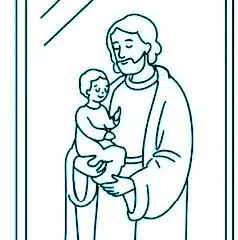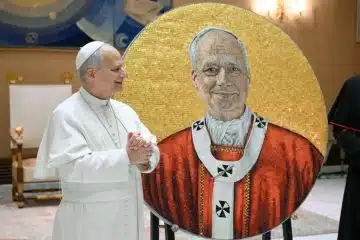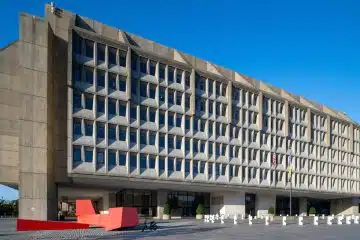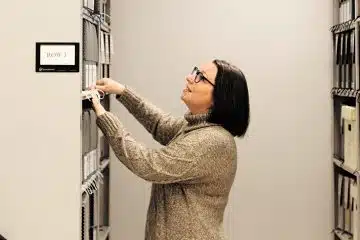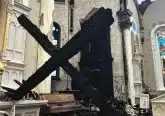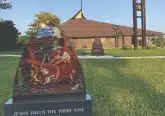Monumental History

St. Augustine’s Parish Cemetery is an essay in local history written in marble and granite. The monuments, headstones and small chapel hint at the lives and experiences of those who rest there. The cemetery’s land, set aside in 1836 on the south side of Minster, is one of the oldest in the area.
In the Land of the Cross-Tipped Churches, where German surnames are common, it may be surprising to find a large number of Irish buried in Minster. While the canal was dug by Irish Catholics from 1838 to 1842, some perished in the harsh winters. This was the closest cemetery to their camps, and it afforded them the Catholic burial they desired and deserved. Today, their names remind us of the sacrifice many pioneers made for a better life in Western Ohio.
In 1849, many lost loved ones to cholera, and the residents of Minster responded to the consequences of the pandemic. Besides founding an orphanage for the living, the community set aside to respect and honor the deceased. Death occurred so rapidly that it necessitated a mass grave. In 1937, a monument placed at the Minster cemetery recognized those unnamed, but still beloved, citizens and parishioners.
One of the unique features of the Minster cemetery is the Steinemann Chapel. The 12-by-18-foot chapel, built in 1855 of red bricks from the Steinemann brick yard, is a testament of God’s faithfulness. When Catherine Steinemann fell ill, her husband, John, prayed that God might heal her. When she recovered, John built the small chapel in thanksgiving. Inside, it houses a painting, titled, “Souls in Purgatory.” It came from Germany in 1852 and hangs behind the altar. The recently-renovated chapel is open to visitors Apr. 1 through Dec. 31 during daylight hours.
In 1891, a large crucifix was set in the center of the cemetery in memory of Father Andrew Kunkler, C.PP.S. He was an early pastor of St. Augustine Parish, as well as the second provincial of the Missionaries of the Precious Blood in the U.S. During that time, he remained in Minster, and both the parish and religious community flourished under his guidance. Father Kunkler wished to be buried among those he ministered to for more than 30 years. Many other beloved pastors are buried around this marker.
The Sisters of the Precious Blood have also been laid to rest in this beautiful place. There is a special section for these holy women who fulfilled the education and spiritual needs of the community. The sisters who lived in the Convent of the Visitation of Mary in Minster were buried there from 1854 through the 1890s. There are 34 sisters total, and they share their allotment with two Precious Blood brothers and three orphan children. In 2010, the sisters replaced the weather worn markers were replaced with a single granite stone to honor those whose legacy upon which they continue to build today.
Finally, there is the headstone for Johann Anton Goehr, who immigrated from Germany in 1833. After designing and building of many of the Cross-Tipped churches, he died in Minster, where he lived most of his life, in 1885. Originally, a tall wooden monument made by one of his sons marked his plot. However, after many decades and repairs, it was replaced
by a headstone, thanks to the commitment of many local individuals in 2020. This elegant black stone features the crowning design work of Goehr: the steeples of St. Augustine Church, which he completed in 1874.
The monuments of the St. Augustine Cemetery recall the heroic history of those who championed their community. Some were laborers, others educators; some, beloved pastors and creative visionaries – all who lived near this cemetery. The roots in Minster run deep, as does the hope and promise this history imparts to the living.
This article appeared in the April 2021 edition of The Catholic Telegraph Magazine. For your complimentary subscription, click here.




